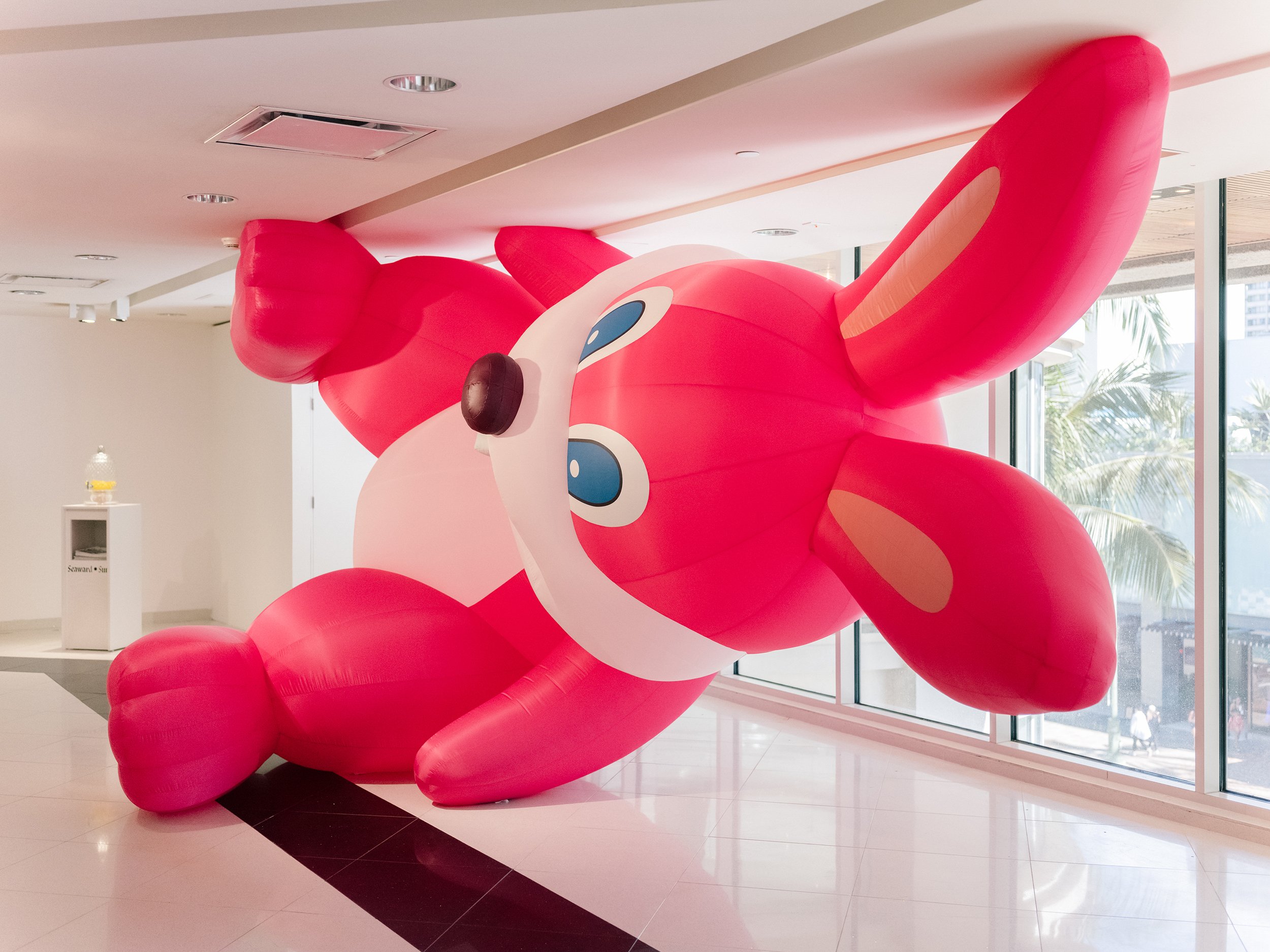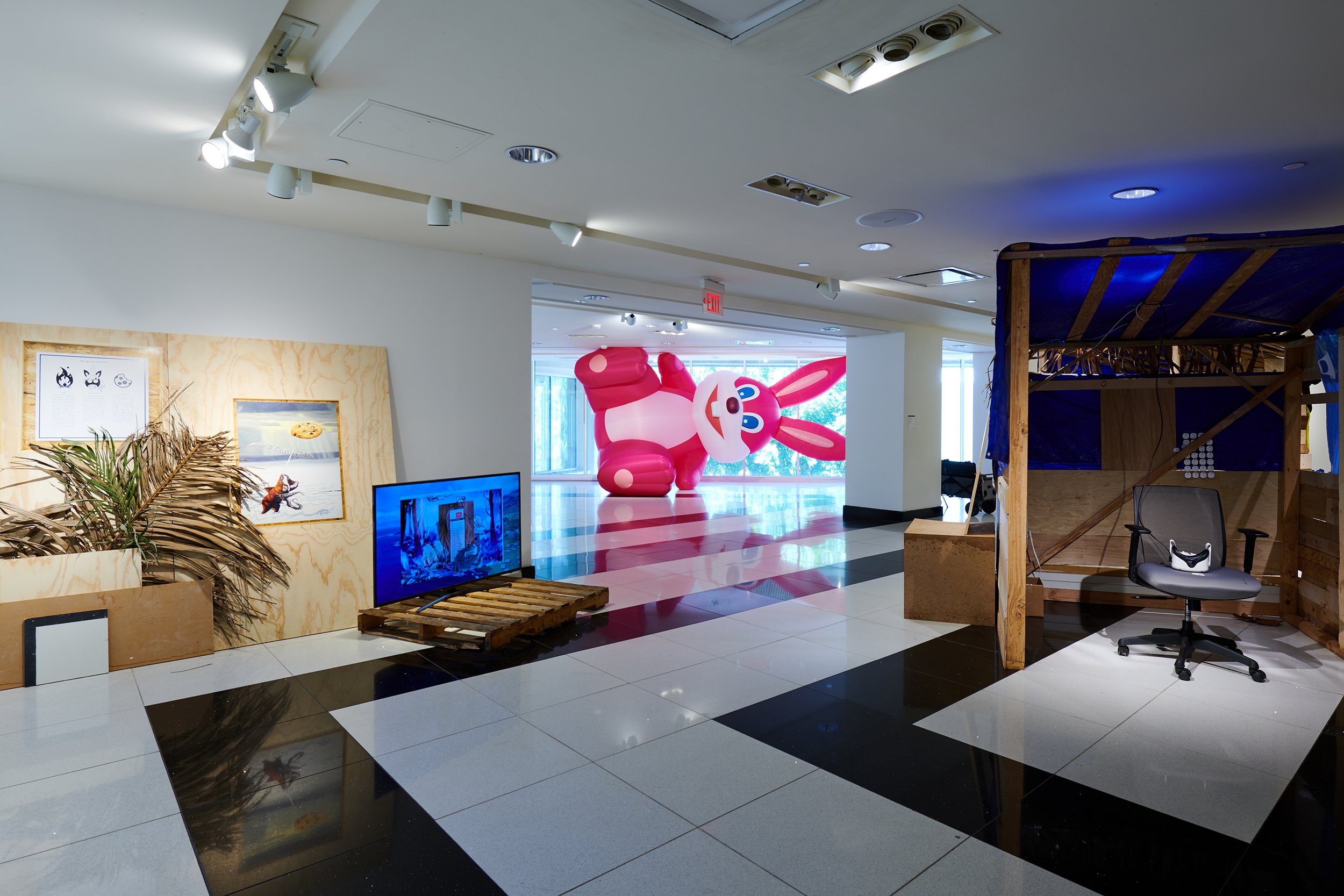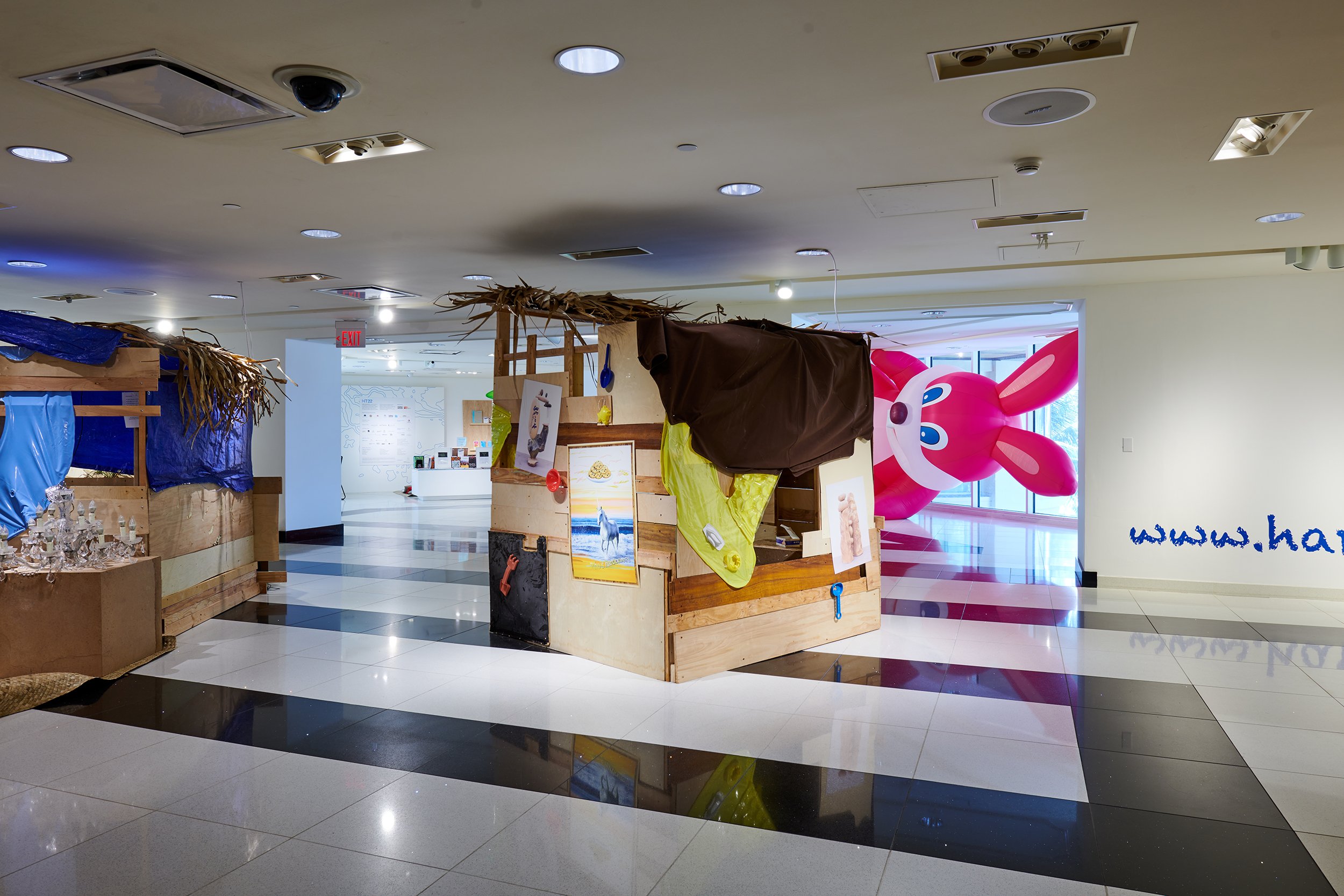hawai‘i triennial 2022
@ ROYAL HAWAIIAN CENTER • Feb 18–May 8, 2022
@ HAWAI‘I STATE ART MUSEUM • July 8–Dec 3, 2022
Momoyo Torimitsu
b. 1967, Tokyo
lives and works in New York
Installation views: Momoyo Torimitsu, Somehow I Don’t Feel Comfortable, 2021, nylon, air blower, sound, Royal Hawaiian Center, HT22, Waikīkī. Courtesy of the artist and Hawai‘i Contemporary. Photos: Christopher Rohrer, Lila Lee, and Kelli Bullock Hergert.
Momoyo Torimitsu studied for a BA at Tama Art University in Tokyo before moving to New York in 1996 to participate in the P.S.1 International Studio Program. She continues to live and work in this adoptive culture. Exploring a wide range of media including performance, photography, video, and multimedia installation, Torimitsu investigates consumer capitalism and corporate culture, excavating hypocrisy in social mores. Her frequent subject of observation is contemporary Japanese society as seen from outside; a viewpoint that enhances the irony and criticality found in her work. Various traditions and social norms often disguised as respectable social values such as diligence, patience, and humility are treated with satirical twists and exposed as bizarre cultural customs that often obstruct gender equality and individualism.
Torimitsu’s 1997 street performance Miyata Jiro on New York’s Wall Street saw the artist dressed as a nurse, dutifully attending a humanoid robot named Miyata Jiro. Representing the archetypal Japanese salaryman, the robot crawled along the ground as if a soldier in a battlefield—a tongue-in-cheek representation of Japan’s diminishing economic might, shouldered here by the sacrificial figure of the middle-aged man in a generic corporate suit. The performance continued as a series that took place in different cities around the world, triggering a variety of reactions from unsuspecting passers-by as it reflected the pervasiveness of the instrumentalization of people in the global economy.
Another of Torimitsu’s works is the series Somehow I Don’t Feel Comfortable (2000–), the original of which features a pair of large, pink, inflatable bunnies installed in a space too small for the sculptures to fully extend their necks and ears. As if forcibly squeezed into a zone of confinement and servitude, these animal-shaped sculptures convey a feeling of discomfort and inappropriateness. Seen in the context of the patriarchal society of Japan, the bunnies are a popular icon of cuteness or kawaii and symbolize inflated male fantasies about women. While pink hints at childlike innocence as an ideal feminine virtue, paradoxically, the bunny is a metaphor of fecundity that aligns the mature female body with the need to satisfy the sexual desire of men and the reproductive requirements of the nation.
For HT22 an updated version of Torimitsu’s Somehow I Don’t Feel Comfortable is installed at the Royal Hawaiian Center, Honolulu. Trapped in this shopping mall in the hyper-commercialized Waikiki tourist zone, this time a single bunny confronts the viewer with its whimsical—or menacing—larger-than-life presence as if to refuse being easily consumed as yet another kawaii fetish.
Momoyo Torimitsu. Courtesy of the artist.
Momoyo Torimitsu has lived and worked in New York City since 1996, when she arrived for the P.S.1 International Studio Program, a grant from the Asian Cultural Council. Torimitsu uses a variety of forms to create her work, including kinetic sculpture, time-based installation, inflatable balloons, video, photographs, performance, media art, and site-specific projects. Torimitsu's work is inspired by the hypocritical imagery of corporate culture and media stereotypes of cuteness and happiness, reexamined through the lenses of irony and humor.
Torimitsu has been showing her works internationally including those at frei_raum Q21 exhibition space/MuseumsQuartier Wien, Austria (2019), ArtScience Museum, Singapore (2019), Black Cube Headquarters, Englewood, CO (2019) and several others. Her recent project, Smile ☺, Wear It Like a Costume! is a media art project using the face-recognition system. The audience can apply a different type of work-mode smile on their face as if trying on a costume. It reveals what society expects from different professions.







